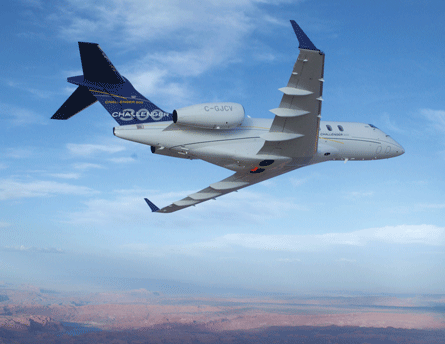Although the coming of integrated propulsion systems is broadly linked to next-generation single-aisle aircraft, the concept readily applies to business jets too. In fact, the sector may become a sort of incubator for the technology.
"In the business aviation space, you have the advantage that there are more new platforms than up in the large commercial aircraft," says Brad Mottier, vice-president and general manager of GE Aviation's business and general aviation operation. "That is one of the reasons we started to form this division at GE."
Mottier adds: "We spend a lot of money developing the latest differentiating technology and would like to apply that in the marketplace sooner than might be possible on commercial airliners." He notes that GE's most modern integrated propulsion system in the sector today is flying with the GE CF34 engine on the Bombardier Challenger 605 series aircraft.
For engine-maker Honeywell, the integrated propulsion system state of the art is represented by another Bombardier aircraft, the Challenger 300. Honeywell builds the nacelle and HTF7000 turbofan engines for the model. T K Kallenbach, Honeywell's vice-president of marketing and product management, refers to the state of the art in business aviation integrated propulsion as "second wave".
"In the first wave, aircraft manufacturers handed us the job," he says. "In the second wave, they wanted us to get really good at it. We did that with the nacelle and engine combination for the Challenger 300. In the third wave, we will optimise the loss lines, control system, valving, piping, and get the full-authority digital engine controller more integrated with the cockpit."
Kallenbach says the Honeywell-built propulsion systems on tap for Gulfstream's new G250 and Embraer's Legacy 450 and Legacy 500 are also second-wave systems in that they were based largely on what was done with the Challenger 300.
To gain the true benefits of integrated propulsion, Kallenbach says the third wave will "almost need a new centreline engine" to start from. "There is more we can do with a from-scratch design," he says. "The key is to design the entire control package, bleed take-off, accessories and so on as an integrated unit."
Optimised in this way, the integrated propulsion system could yield a 5-6% decrease in specific fuel consumption at certain design points, compared with "a couple of percentage points" for a second-wave design, says Kallenbach.
 |
|---|
© BombardierFor Honeywell, integrated propulsion on the Challenger 300 is the state of the art |
When might a new centreline engine be coming? "Could be soon - could be later," says Kallenbach. "We're talking to a number of airframers about completely from scratch new centreline engines. Most are in the larger cabin range."
GE, which stands to gain from technologies developed by a new integrated propulsion system joint venture under the CFM banner, is apparently moving to the prototype stage for some third-wave technologies.
"Some things are beyond paper," says Mottier. "We have elements we're working on that are clearly going to be advancements and bring some value, but we're not ready to share exactly what we're doing."
When those technologies will find their way on to an airframe is uncertain, however. "Finding potential applications for new ways of thinking about integrated propulsion has not been difficult in business and general aviation," says Mottier. "The difficulty now is the economic slowdown."
Source: Flight International
















